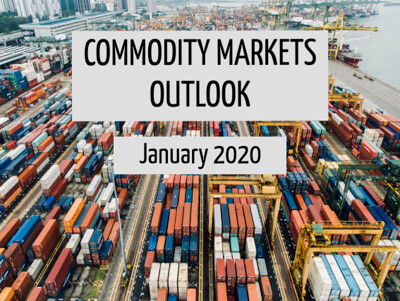
Global Macro: The impact of the Coronavirus on industrial commodities has had an immediate effect. With China being one of its biggest consumers, the extent of its impact has been hidden in the data by the extension of the Lunar New Year holidays. From an economic activity perspective, due to limited data released, it is still very difficult to gauge the extent of the impact but a one week shut off is 7.7% of quarterly GDP slashed, or 1.5% of global quarterly GDP (with the simple assumption that China is 20% of global GDP). The ability of China to catch-up will depend on their ability to put their factories back to work. Four Elements’ reference equally weighted base metal basket was down 5.5% on the month, a relatively low reaction given the impact. Contrary to SARS, the market anticipation that the virus will be short lived probably reduced the economic impact of this phenomenon. China’s intervention in markets is expected to be strong and the velocity of money in the country will be watched very closely1. Precious metals, after a strong start of the year, remains the alternative asset class of choice in an environment where geopolitical risks have increased without denting equity valuations. The total assets invested in Gold ETF have now reached the level last seen at its peak in 2013. Real money managed remains under allocated overall to precious metals, leaving some potential upside.
Energy: The petroleum market was the most affected and has priced in immediately a demand shock linked to the Coronavirus impact in transportation, travel and retail sectors. Crude oil dropped more than 15% on the month, wiping out more than half of the gains made in 2019. The quick reaction showed the relatively low inventory of crude available and justified the increased short term two-way volatility. Given the strong carry, the incentive to be long on the complex disappeared and the curve moved from strong backwardation to a slight contango. The carry trade had been overcrowded with elevated long levels which exacerbated the sell off. Whether the sell off was excessive versus the expected fundamentals has to be verified over the next few weeks and whether OPEC members (in particular Saudi Arabia) will try to address the situation with supply cuts.
Agriculture: Agriculture commodities also suffered from the demand freeze experienced due to measures taken to contain the spreading of the Coronavirus. The peak demand season (during Chinese New Year festivities) for lean hogs saw big cuts in consumption from the biggest importer (China) and the market dropped more than 15%. In grains, soybean was also impacted (-9%) and rubber suffered also a strong reversal (-10%). Out of soft commodities, sugar (white sugar up 10% on the month) was the outlier with reported lack of supply issues (reports from Indonesian mills, the world largest importer, said that they didn’t have enough raw sugar to process).
Volatility: Volatility generally saw significant gains over January. This was driven by global concern over the Coronavirus and its impact on demand for goods and transport. The gains were the most pronounced in crude with implied vol for ATM calls up from 23% to 42%. On the equity side the VIX is up from 13.78% to 18.84% on the month while the VSTOXX is up from 13.95% to 17.15%. Gold saw an increase in both volatility and underlying prices, with implied volatility up from 10% to 12%. Silver, however, was stable with implied vol remaining at 18%. The agricultural sector was also more stable due to limited impact on food demand and expected negative impact on production, with China being the epicenter of the crisis and a major producer of agricultural products. There was even a decline in implied volatility for corn, from 17% to 15%, while it remained at 14% for soybean.
1 Read the latest report to our proprietary index on China’s monetary conditions: Commodity Leading Index Monetary China (January 2020), the next publication will be issued on 15th February on Alphien blog.
Source: Four Elements Capital
